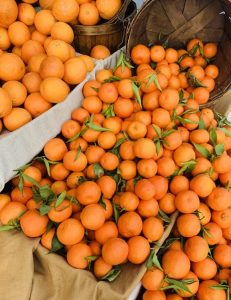I see so many directional signs along the road when I travel that say “left over bridge” but I seldom see the leftover bridges. Naturally, I wonder, as I’m sure you may have, why are there so many leftover bridges? Did they order too many? Was there a population decline? Did a river dry up? Was there a drought? Why? Why is there a leftover bridge? Maybe because they ran out of materials when they were building the road, so they couldn’t get the road to go far enough to meet the bridge…. Or, maybe it was just a bridge to nowhere.
“You are so silly,” my friend James told me. “Everyone knows that those signs denote where trolls on diets have dined. They used to eat the whole bridge, but since they started cutting back, now there are plenty of leftovers.”
Coming soon, my new book, Leftover Bridges, a gathering of pieces I have written from my musings on my travels and thoughts, things I see from the corners of my imagination, some published, some not, delivered to you in one tasty serving. While Leftover Bridges is in the editorial process, I will post some samples that I hope you will enjoy. I wish I could tell you I’d offer you a glass of wine with them, but I haven’t figured out how to do that yet. Meanwhile, if you’re hungry for more, I invite you to read my currently published books in print form or ebook. Just follow the cover image links to Amazon and buy now.






My friend drove me up the long, winding mountainside road through the golden aspens, all the way to the top, nearly 10,000 feet. She stopped her little tan pickup truck and we got out. She kept two beach chairs in the back and we carried them to the sand. On the shore of Rock Creek Lake we sat and talked while the four o’clock sun lingered, warming our bodies and articulating raylets of colored light from the shimmering ripples, like fragments of rainbows refracted from a crystal hanging in a sun-filled window. Little rounded polished pebbles lay in soft pastels at the water’s edge, washed by the crystal clear wavelets. From the waterline on the far shore surged the sheer granite mountain wall rising to meet the sun yet seeming so close I could lay my hand on it in the rarified atmosphere. The sky was the bluest of blues, touched by no cloud. Was I in heaven? Was I alive? Had I been incorporated into a postcard picture? Someone pinch me. Yes, this is real.
Today, though, this picture is a dream, a fragment of a vast spectrum of memories I collected during my many visits to Mammoth Lakes, California. I’ve long dreamed of having a home in Mammoth. One day maybe I will. Mammoth Lakes, Mammoth Mountain: In the heart of the Eastern High Sierra, it is among the most beautiful places on earth––or is it simply heaven?
I lived in Redondo Beach, near Los Angeles, when I visited Mammoth and my friend took me to Rock Creek Lake. Four years later, I had a choice of moving to Mammoth or taking a winter working vacation in Naples, Florida. As autumn approached, I let the cards fall, and Naples floated down on top. “You’re not gonna like that humidity,” my friends said. Granted. It was a choice of opposites: Opposite coasts, opposite ends of the country; Mammoth had single-digit humidity while Naples had––I found out later––quadruple-digit humidity. Mammoth sits at nearly 9,000 feet altitude in the heart of the Long Valley Caldera, where swarms of earthquakes are caused not only by movement along faults, as you might expect, but also by pressure of magma rising beneath the earth’s surface. Naples, on the other hand, lounging in the lightning capital of the world, basks single-digit feet above sea level, where swarms of snakes and turtles slither and crawl up from the swamps ahead of the next flood.
Regardless, in October 1994, I packed up my belongings and moved to Naples. My daughter, 27, helped me pack. If you ever want somebody who is an energetic, organized, efficient packer, with a keen sense of spatial relations and a get-it-done attitude, call her.
Ten years earlier, when I moved from a house to an apartment, my daughter helped me. Our two-car garage was filled with boxes containing the history of my life so far––humorous (well, hilarious, I thought) parodies on commercials I had written as a child and an excellent version of “The Night Before Christmas,” yearbooks, scrapbooks, old photos, personal household objects I wasn’t currently using, and I don’t know what else. I stood there in the garage, exhausted before I began, almost in tears, and said to my daughter, “I don’t know where to start.” “Start at the front,” she said. That seemed logical.
So this time when I moved I engaged my daughter’s help posthaste. “Mom … you have a lot of stuff,” she said, packing up the 9,000th box. As a writer, naturally I need to own a library with every book in print, save all newspaper and magazine clippings––or the whole publication––that might be of research value to me someday, and save every draft (pre-computer) and every note of every story or essay I’ve ever written; and, of course, my journals. Yes, there are a lot of boxes.
Nevertheless, I stuffed my pen, notebooks and flyswatter into my little Hyundai and rode off into the sunrise. I saw my quarter century of life in Redondo Beach roll out behind me in the rear-view mirror. I also saw my daughter standing on the curb alone, waving goodbye. I would be back in a few months.
I lived in Naples seven years. When I lived in Redondo Beach, most of the time I actually lived in the Hollywood Riviera, created in the 1920s as a summer place of distinction for movie stars. It was that part of Redondo on a hillside of the Palos Verdes Peninsula overlooking the Santa Monica Bay, which, just before I moved there, was annexed to neighboring Torrance, but retained it’s Redondo Beach postal status. So I drew the benefits of both cities at once. I frequented Torrance Beach (for my friends who had grown up there and my daughter and her friends it was the local beach hangout). I always said I was from Redondo, though (we all did), unless I was using the superb Torrance library or civic center. I kept a post office box in Redondo for a while after I drove away that final time and I have worn my Redondo Beach Public Library 1892 centennial sweatshirt, sapphire blue with white lettering around the seal, into the millennium.
Naples was sculpted from the mosquito-infested swamp and billed as paradise at about the time the chimneyed, red-turreted Hotel Redondo was razed from the moonstone-invested Redondo seaside in 1926. Built on a bluff overlooking the Santa Monica Bay in 1889, with views of the Santa Monica Mountains along the Malibu coastline to the north, the 1,000-foot altitude Palos Verdes Peninsula to the south, and the vermillion sunsets to the west, the hotel was done in by Prohibition and sold for firewood. Its near twin, the historic Hotel del Coronado, built on Coronado Island off San Diego in 1888, continues to host guests in grand style. The streets above Moonstone Beach where the Hotel Redondo stood bear the names of gemstones—Ruby, Diamond, Sapphire, Emerald, Beryl, Garnet, Topaz, Carnelian…. In the stead of the Hotel Redondo, today jutting out over the harbor, high over the waves in water as green and clear as an emerald, stands the bustling Redondo Pier with its restaurants and shops; the present pier has lasted longer than its predecessors lost in El Niño storms every few years. Naples, at the time I lived there, growing faster than L.A., rang of cachet, and cash, a classy resort town on the Gulf of Mexico, great for golf and raising kids; but in the comfortable corners of my mind I continued to reside in Redondo.
I almost got toasted in Naples when lightning struck the ground, fried my TV, VCR, my electric stove, and shot glowing cinders through my jalousied door across the kitchen to the far wall, mere inches from my right arm as I stood at the stove. It was then that I determined to go home to California. (Well, and there was the palmetto bug that was just too big to squeeze between the slots when I was trying to wash it down the drain because I had heard they smell awful if you squash them.)
I bought a pre-owned white Mercedes, loaded it down and headed north to Delaware to visit family before jogging west to California. All I needed was a strip of tassels hanging from the windshield. In Fort Myers flakes of dried rubber started flying off the tires; I had to stop and buy new ones. The dealer hadn’t mentioned that the car had been sitting a long time. “You can trust me,” he said. I should have known. But, I really wanted that car––sun roof, long wheelbase, red leather upholstery, CD player…. Heading east on Interstate10 from I-75 to Jacksonville, I began hearing a helicopter rotor noise. I turned up the music. By Fayetteville, even the music didn’t drown out the squeaking whirring. I spent five days in a motel having the broken rear axle fixed; that and the gasoline leak in the trunk. The cost and length of the repair drove me to believe I was to become Fayetteville’s newest resident.
I might have been more practical had I leased a galleon and sailed up the Atlantic coast into Delaware Bay. I’m always wishing for my ship to come in. As the captain, I could personally sail it in. Ah, but here I veer off course.
When I finally cruised into Delaware ten years ago (on I-95), I realized that my mother, whose life has spanned nearly a century, needed help. I’m still here. John Updike, in his novel “In the Beauty of the Lilies,” describes Delaware as a low, boggy place where everybody always has a runny nose. Be right back. I need a hanky.
Ah, before you, dear Delawarean reader, start pelting me with chicken beaks, let me point out that I have lived in Delaware off and on since I was a kid––involving crossing a lot of bridges, some of them covered, some of them over the Delaware River to New Jersey, burning as few as possible––over the course of my life and have enjoyed the place. I’ve written and published stories about its history, lore and mysterious stirrings. Is Blackbird Forest really named after Blackbeard, the pirate, thriving so near the Delaware Bay he sailed up, and is his treasure really buried somewhere beneath those tall old trees rising out of the bogs? (Carolina bays, they call them.)
Best of all, I like stopping on a fine November day at a red-brick corner of Sixteenth and something in Wilmington where F. Scott Fitzgerald and his daughter, Scottie, waiting in their car for Zelda, sat and talked and watched the faint movements behind the curtains of a house over the way with the loose, banging shutter where, Scott told Scottie, a Fairy Princess in a yellow dress was kept concealed by an Ogre. The Prince has to find the three stones that will release the Princess, he told her. Fitzgerald published his story “Outside the Cabinet-Maker’s” in 1928. He could remember that world but he knew he would never again see it or touch it for himself.
Yet lingering in the corners of my mind memories come up in ripples shimmering there for a moment on the far shore, magically carrying me to one fine day in autumn where golden leaves, like doubloons, shine with a soft tremulous light in a rarified atmosphere. For me now, California remains a state of mind. The shutter slams shut on the winds of change, but it swings open again.
August 8, 1996
Revised November 23, 2010
Naples, Florida
 Every April writers and bloggers come together to take up the Blogging From A-Z Challenge. In 2015 and 2016, I took up the challenge, too, along with this annually growing group.
Every April writers and bloggers come together to take up the Blogging From A-Z Challenge. In 2015 and 2016, I took up the challenge, too, along with this annually growing group.









